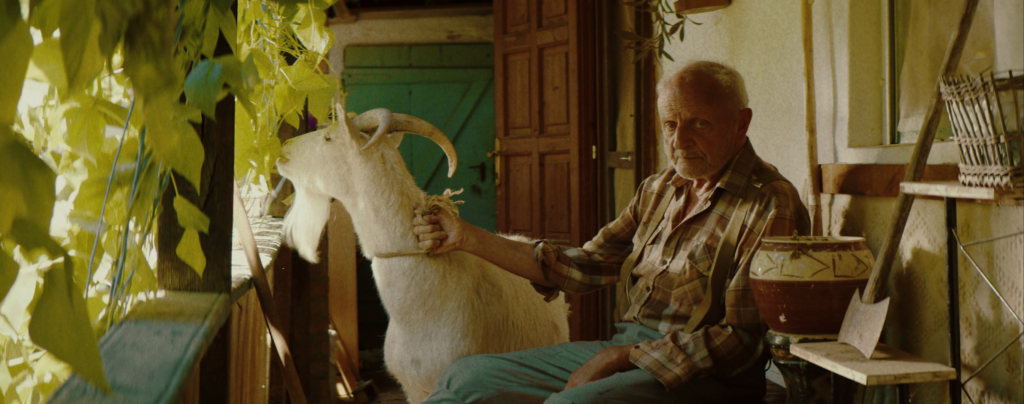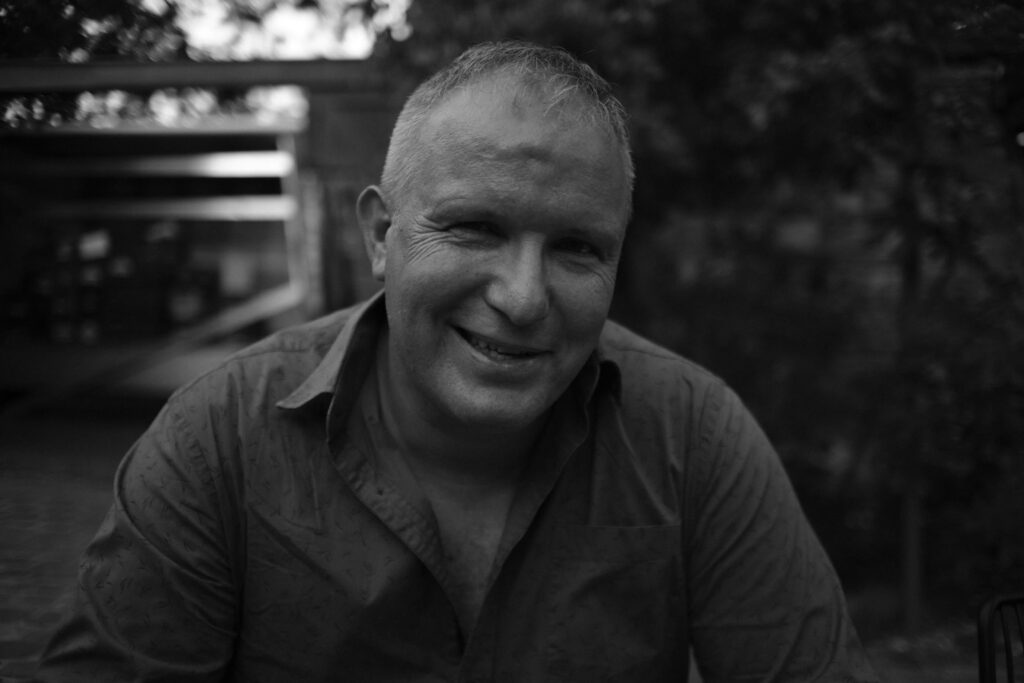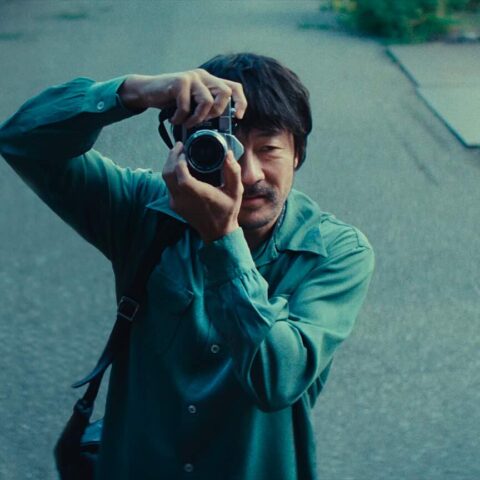
In an illuminating interview, filmmakers Dávid Géczy and János Wiedermann provide a glimpse into the creative process behind their captivating comedy-drama short film “Have a Nice Apocalypse!” starring Andor Lukáts, discussing inspiration, challenges, and the intricate themes that make their work so compelling.
Synopsis – Old man Márton lives in a charming village in the hills, but he doesn’t get along well with his fellow villagers. After an accident in the nearby power-plant, he is left on his own in the village, and must adapt to this new situation. When the villagers return, he may has changed and ready to connect, but do the others accept him?
Dávid and János, what inspired you to create “Have a Nice Apocalypse!”? What was the initial idea or concept that led to the film’s development?
Dávid: I have been trying to find a host for this project, written by István Nyíri Kovács, for 10 years. We won a tender for it, and then the film project was rejected at the last minute. The covid and the war made the film even more topical. After meeting János, it became clear that we should make this film together. We discussed this while our dogs were walking together on a big island, in a similar understanding.
János: By the time of the dog walking in 2021, we worked together on some student-movies and ads, and for me, coming from a different professional background, making a short movie was a logical next step. Dávid, on the other hand, having many years of experience on the field, encountered some very good scripts, he loved, but for some reason they never got produced.
We were in the middle of the epidemic, the city itself felt apocalyptic at times, and I fell in love with the story of the old man and the goat.
The decision to make a bitter-sweet comedy with an apocalyptic backdrop was an interesting and original creative choice. Alienation is a central theme in the film. What inspired you to explore this theme, and what do you hope to convey to the audience through Márton’s experiences?
Dávid: In the past, I’ve often felt, coming home from a shoot or a night out, that looking into my dog’s eyes, I can relax, I can find my way home.
This old uncle can’t get enough attention in the village, as the rushing world is unable to keep up with the rhythm of older people. Animals are the best at adapting to age and lifestyle. They are the true survivors. Perhaps we should enjoy any kind of utopia or dystopia as they do, always have.
János: I had some sad personal experience at that time – I got separated from my own kids, and that surely had some effect on the theme-choice. For me, the movie is about trying to do the best connecting the people around you, but if it fails, you still can find your own peace.
The film also features a wonderful cast of animals, with the goat being a memorable scene-stealer. How did the idea of incorporating a goat into the film come about? Did the animals require any special training to perform certain actions or behave in specific ways according to the script?
Dávid: Yes! The white-furred goat is part of the story from the beginning, as is the uncle with the white hair. These are the basic premises. Of course, there are pros and cons to trying to get an 80-year-old man and a goat into a power plant on a thin metal bridge, while also filming.
János: From the earliest version of the script was the animal-related part of the story important. We were thinking about a dog for a time as well, but felt that the goat could be a good counterpart for the church-mass-priest storyline (taking into the historic, mythical considerations).
And as for the specific goat (“Bóka”), I think – after Andor of course – he had the most acting experience: he was supported by a company, what is supporting trained animals for movie shootings for over 3 decades.

Could you share some insights into the challenges and advantages of being independent filmmakers?
Dávid: János as a producer, he did everything he could to make me feel that our options weren’t limited. He prepared everything. He found and organized fantastic people and locations for the shoot. I would like to take this opportunity to thank Margit Fuhrmann and the others for standing by János and helping him with his work.
János: The tight budget can be a curse and a blessing at the same time: makes you think outside the box.
For example: for the military convoy I first contacted the car-rental companies, but one vehicle would cost like 2000 Euro/day, so we have to find another solution.
Luckily, the people in the Börzsöny mountains like to collect – and use – old military vehicles, so we spent some days driving around and ringing doorbells, wherever we saw a vehicle fit. We found some extras and in the end some friends as well…:)
“Have a Nice Apocalypse!” was shot in the Börzsöny mountains, with strong local collaborations. How did working with the locals contribute to the authenticity and overall feel of the film?
Dávid: When Janos showed me the site, I fell in love with it immediately. The hospitality of the people and the beauty of the place was fantastic.
János: I’m originally from the area, so I had a strong friend-base to build on.
The villagers also enjoyed the shooting, came as extras whenever it was needed.
And we really find some strong character among them. 🙂
The film features the legendary Hungarian actor Andor Lukáts. What was it like working with such an esteemed actor, and how did his involvement influence the project?
Dávid: Andor is one of the most prestigious veteran actors in Hungary. His every look reflects a destiny. I have worked with him in three films so far. I am very grateful to know him.
János: Andor has a very strong screen presence. He invested a lot playing this character, there were some improvisations as well: in some cases, it left the whole crew speechless.
Vazen anamorphic lenses were utilized to achieve a specific apocalyptic effect and merge the Czech New Wave and New Hollywood atmospheres. Could you elaborate on the creative decision behind choosing these lenses and the impact they had on the visual storytelling?
Dávid: The anamorphic lens was reminiscent of the invasive, blue lens flare, wide-angle imagery of Spielberg’s films. I’m thinking here, for example, of Encounters of the Third Kind. On the other hand, it gives the film a feature film feel. And the Czech New Wave influence has also injected a touch of Hrabal and Menzel’s acerbic humor into the story and the details.
The short film touches upon themes of isolation, change, and human connection. Can you discuss the messages or emotions you intended to convey to the audience through “Have a Nice Apocalypse!”?
Dávid: We want to portray a mood, a feeling of life. We don’t want to say exactly what the conclusion is. Just as in an apocalypse, we don’t know exactly how life will end. As the song says: “As it will be, so it will be…”
János: We tried to create complex emotions: some sadness, loneliness combined with humor and joy. We were talking a lot about the end of the film as well, and I’m glad that we managed to create something that let the audience think and guess a little bit…
Dávid Géczy, as both the director and cinematographer of the film, what was your experience like to wear multiple hats during the filmmaking process? How did this dual role influence your creative choices?
Dávid: For a long time I wanted to try to do both in a feature film, not just a commercial and a music video. My cameraman colleague Gábor Szentiványi helped me with this. I enjoyed being closer to nature, people, and animals. I can almost touch the landscape, the air, the soul with the camera lens.
After the release of “Have a Nice Apocalypse!”, what are your future plans? Do you have any other projects in the pipeline that you’d like to share with your audience?
Dávid: I would love to make more films with János. I have a black comedy coming out called Game Over Club. It’s about suicides who go to a hotel to die from different parts of society. I’ve started an indie film in New York, and we have more plans for the future.
János: I would really like to do a low or no budget horror. Last year we made a music video together for Róbert Dolák-Saly called: “Sose Félj!” (“Don’t be afraid!”) with one of the most famous dancers in Hungary, Andrea Ladányi and actor Jankovics Péter. Check it out, it has some strong “Psycho” vibes in it!
Lastly, what advice would you give to aspiring filmmakers who want to create meaningful independent films like “Have a Nice Apocalypse!”?
Dávid: It is very important to find the right topic. For a long time, I was more interested in form and making a citizen pop. It’s becoming more and more important for me to entertain as well as to make people think…
János: Don’t be afraid to plan big, there are creative solutions for almost every problem.
And if not, an editor-God like Attila Lecza can still solve it!

Dávid Géczy
Dávid Géczy was born on 6 June 1981 in Budapest, Hungary.
He is a director, producer known for “A zene határtalanul (2016)”, “Lisztérium: Ahol a zene él (2015)”, and “Győztes (2014)”.
He is directed and produced many TV series, documentaries, and commercials.
From 2015 he is the leader of the commercial and video clip training of the Hungarian Film and Media Institute.
He is also hosting an online podcast “Filmodüssziea”.

János Wiedermann
János Wiedermann was born on 16 March 1975, in Vác, Hungary.
He is an economist, entrepreneur, working in real-estate and also for NGOs, mentoring kids from bad economic background. He studied in the Budapest Film Academy and producing films since 2020.
